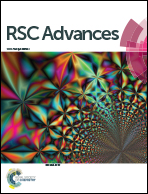Synergistic activity of quorum sensing inhibitor, pyrizine-2-carboxylic acid and antibiotics against multi-drug resistant V. cholerae
Abstract
Antibiotic resistance is one of the most pivotal health menaces in the human population worldwide. Use of conventional antibiotics at high concentration for prolonged periods facilitates a selective pressure on the bacterial strain to develop resistance to these antibiotics. The ascent of multi-drug resistance in Vibrio cholerae strains is a key issue for alternative drug development against cholera. A drug that could curb the virulence of V. cholerae is an elective choice for treatment. A few research studies have been carried out to discover such alternative medication that has an anti-virulent property rather than antibacterial activity. Combinatorial antibiotic treatments along with anti-biofilm compounds have diverse effects on bacterial growth i.e. it can be additive, synergistic or antagonistic. In the present investigation, combinatorial action of 2,3-pyrazine dicarboxylic acid derivatives (QSIVc targeted against the quorum regulator, LuxO) along with antibiotics was evaluated. The results indicated that QSIVc could inhibit biofilm at a very low concentration (IC50 varying between 1 μM and 70 μM). The synergism of the compounds with the reported antibiotics (doxycycline, tetracycline, chloramphenicol and erythromycin) was evaluated by the checkerboard method. The fractional inhibitory concentration (FIC) values varied from 0.0 to 0.5 for each combination. The ΔE value (750–1900), according to the bliss independence model showed that the QSIVc synergistically enhanced the inhibitory effect of the reported antibiotics against the multidrug resistant clinical isolates of V. cholerae.


 Please wait while we load your content...
Please wait while we load your content...